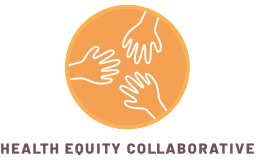14 Jan Minority communities need access to GLP-1s. Congress and President-elect Trump must deliver.
Over the past few years, GLP-1s like Ozempic and Wegovy have become household names. Prescriptions for these medications have skyrocketed in the United States, from just over 131,000 between 2015 and 2018 to more than 679,000 between 2019 and 2023.
These drugs are popular for good reasons. GLP-1s are valuable tools for managing obesity and diabetes — conditions that can lead to other serious health issues, ranging from heart disease and stroke to kidney failure and even early death.
The medicines help patients lower blood sugar levels, reduce the need for insulin, improve cardiovascular health, lose weight, and reduce inflammation. Early research indicates that GLP-1s could have cognitive benefits for patients, too — even slowing the development of Alzheimer’s and other neurological diseases.
The benefits could be particularly life-changing for people in minority communities, including Black, Hispanic, and Indigenous Americans, who are disproportionately likely to develop obesity and diabetes.
Unfortunately, there are gaps in access to the drugs. One analysis found that 65% of GLP-1 prescriptions written between 2021 and 2022 went to white people, even though they make up 59% of the population.
The disparity in access stems from numerous obstacles, including:
- Insurance coverage. Americans of color are more likely to be uninsured than their white counterparts. They are also more likely to rely on Medicaid, which only covers GLP-1s in 13 states. And even with private insurance, coverage of GLP-1s is extremely limited.
- Cost. Without insurance coverage, GLP-1s can cost between $900 and $1,350 per month. With insurance coverage, out-of-pocket costs range from $50 to more than $750 a month. Such costs are prohibitive for people in lower income brackets.
- Health literacy. Navigating insurance coverage, out-of-pocket costs, and medical terminology is a challenge for everyone, but especially for those who face socioeconomic difficulties.
- Cultural and social factors. People in non-white communities are often less likely to have the time, money, trust in medical professionals, and access to doctors required to obtain a GLP-1 prescription.
These barriers won’t be overcome overnight. But the incoming Congress and Trump administration can take major steps to improve access.
Lawmakers need to pass legislation that expands Medicare and Medicaid coverage for GLP-1s. At the same time, once back in office, President Trump should endorse the Biden administration’s proposal for Medicare and Medicaid to cover the new obesity treatments. If enacted, this would make the drugs accessible to an estimated 3.4 million Medicare recipients and 4 million Medicaid enrollees.
These policies would save healthcare dollars. An analysis from Emory University found that Medicare beneficiaries who have at least one comorbidity and lost just 5% of their weight spent $1,262 less on health care over the course of the year.
Most importantly, ensuring equitable access to GLP-1s would significantly improve health outcomes for Black, Hispanic, and Indigenous Americans, reducing health disparities. That’s a goal the next Congress and President must pursue on day one.


